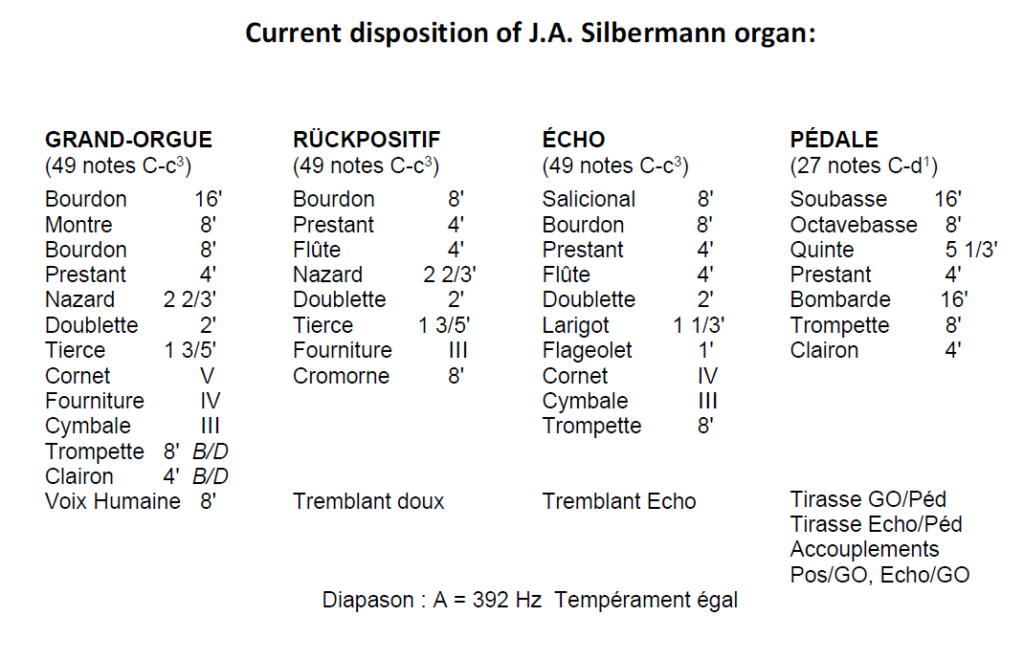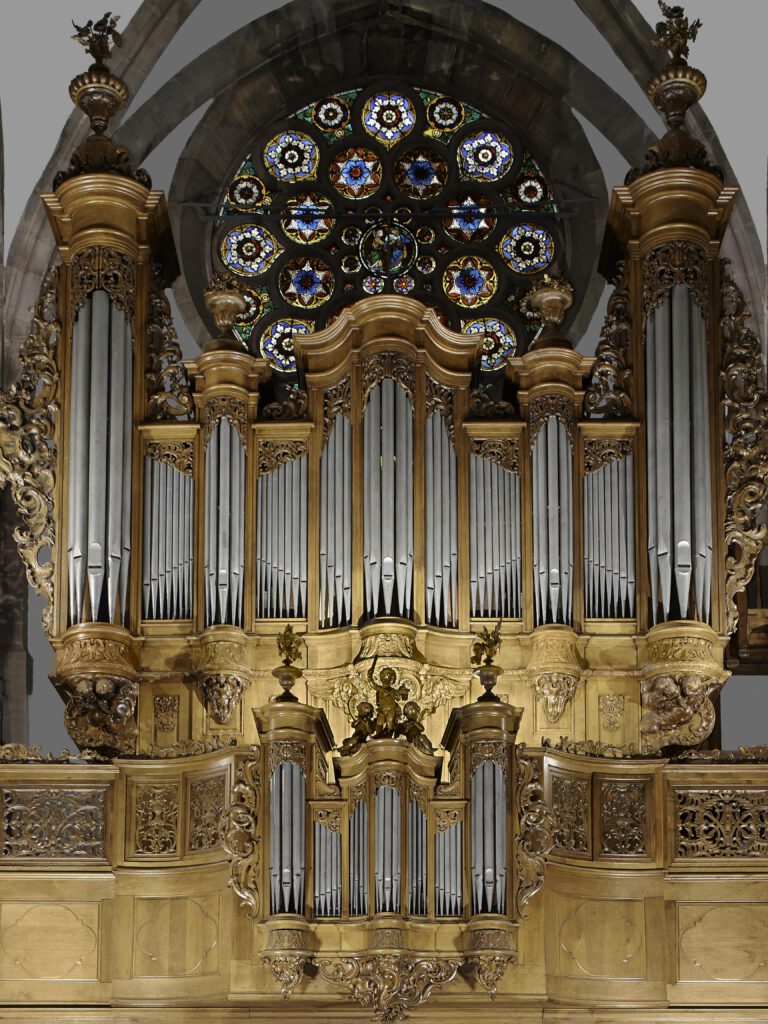The historical J.A. Silbermann organ (1741)
The Silbermann family can be considered as the Stradivarius of organ building because of the quality and the particularly warm and brilliant sonority of their instruments.
Johann Andreas Silbermann was born in Strasbourg in 1712. He was 24 when he submitted a quote for a new organ for the Saint Thomas Church in 1736. The contract was signed in 1737.
He not only created the design of the admirable case of the instrument carved in oak by August Nahl the Elder (1710-1785), renowned artist (who also made some of the sculptures in the Sanssouci palace in Potsdam), but also the sliding panels of the upper part of the gallery (the lower part being of the late 17th century) which were created by a local artisan, Master Riediger, in 1737. The instrument was inaugurated in February 1741.
On his way back from Paris in the fall of 1778, Mozart stayed in Strasbourg for about three weeks. The date of his arrival there is not known; his first letter written in this town is dated October 15, 1778, the second was started October 26 and finished November 2, the day before his departure for Mannheim.
In Strasbourg Mozart played three piano concerts – October 17, 24 and 31 – at the Poêle du Miroir, meeting place of the Merchants’ Guild, the current Mozart Hall, and the Théâtre Français, the current Opera House.
Mozart also performed, in the presence of J.A. Silbermann, in two organ concerts, as he wrote to his father on October 26:
“[…] As soon as they heard my name, the two, Herr Silbermann and Herr Hepp (organist), called on me, and also Kapellmeister Richter. […]. I played publicly on the two best organs that Silbermann has here, in the Lutheran New Church [today: Temple Neuf] and in the Thomas Church. […]”.
It is interesting to note that the Mausoleum of Marshal Moritz of Saxony, inaugurated in 1777, one year before Mozart visited St. Thomas, possibly inspired Mozart for the statue of the Commander in his opera Don Giovanni.
Having been romanticized in 1836 by Martin Wetzel, the organ was saved from further modernisation in 1908 by Albert Schweitzer who instead had it restored by Dalstein-Haerpfer. This firm had, in 1905, built the Choir organ in post-romantic style according to Schweitzer’s specifications.
On July 28, 1909, at 9 pm, Schweitzer initiated the famous memorial concerts commemorating the death of J. S. Bach.
Towards the end of his life, Albert Schweitzer reminisces: „How wonderful it was in 1893 when I played the instrument for the first time at the invitation of the good organist Adam. It still had the original sonorities of the time of Silbermann. Its third manual possessed great charm. Widor, upon hearing the old instrument, appreciated it immensely” (letter from A. Schweitzer to André Stricker, 8th of August 1963).
In 1927 the tracker action of the organ was replaced by pneumatic action, and in 1956 the instrument was electrified. In 1979, Alfred Kern restored it to its original state under the auspices of the French Historic Monuments Department, with some technical adjustments in order to enlarge its repertorial capabilities.
Today, about half of the pipes and notably the façade pipes are Silbermann originals; in 1917, they were slotted to be recuperated as war material, but the German government authorized their safe keeping in order to keep the historic character of the instrument and because Silbermann was of “Germanic” origin. As a result, the St. Thomas organ can be considered as the best preserved among the 13 instruments in Strasbourg built by the Silbermann family.
Two interesting visual details: the central part of the Great organ and Ruckpositive cases respectively has three turrets, and the pipe in the centre of each towerlet in both cases has a rounded “Labium” or mouth shield whereas the other pipes have one in triangular form.
Although the instrument was originally built in the French style, it is also suitable for the music of J.S. Bach, not only because of the Saxon roots of the Silbermann family but due to the actual disposition of the pedal, which indicates polyphonic play.
One can still admire the original console of the instrument, on which keyboards Mozart actually played during his stay in Strasbourg 1778, exhibited in the nave of the church.
Daniel Maurer


Photo by Winsoft
Herophoto by Christophe Hamm